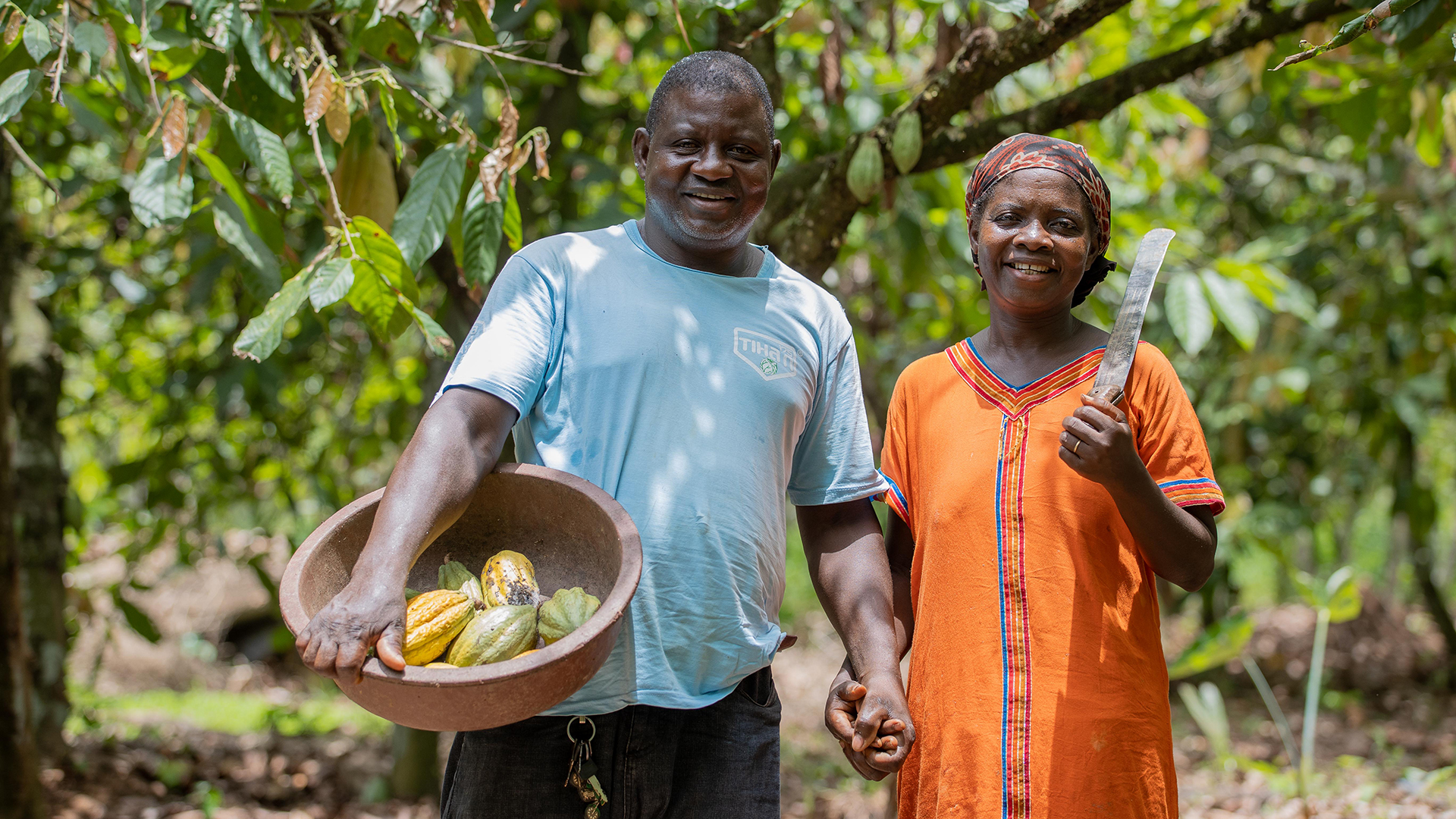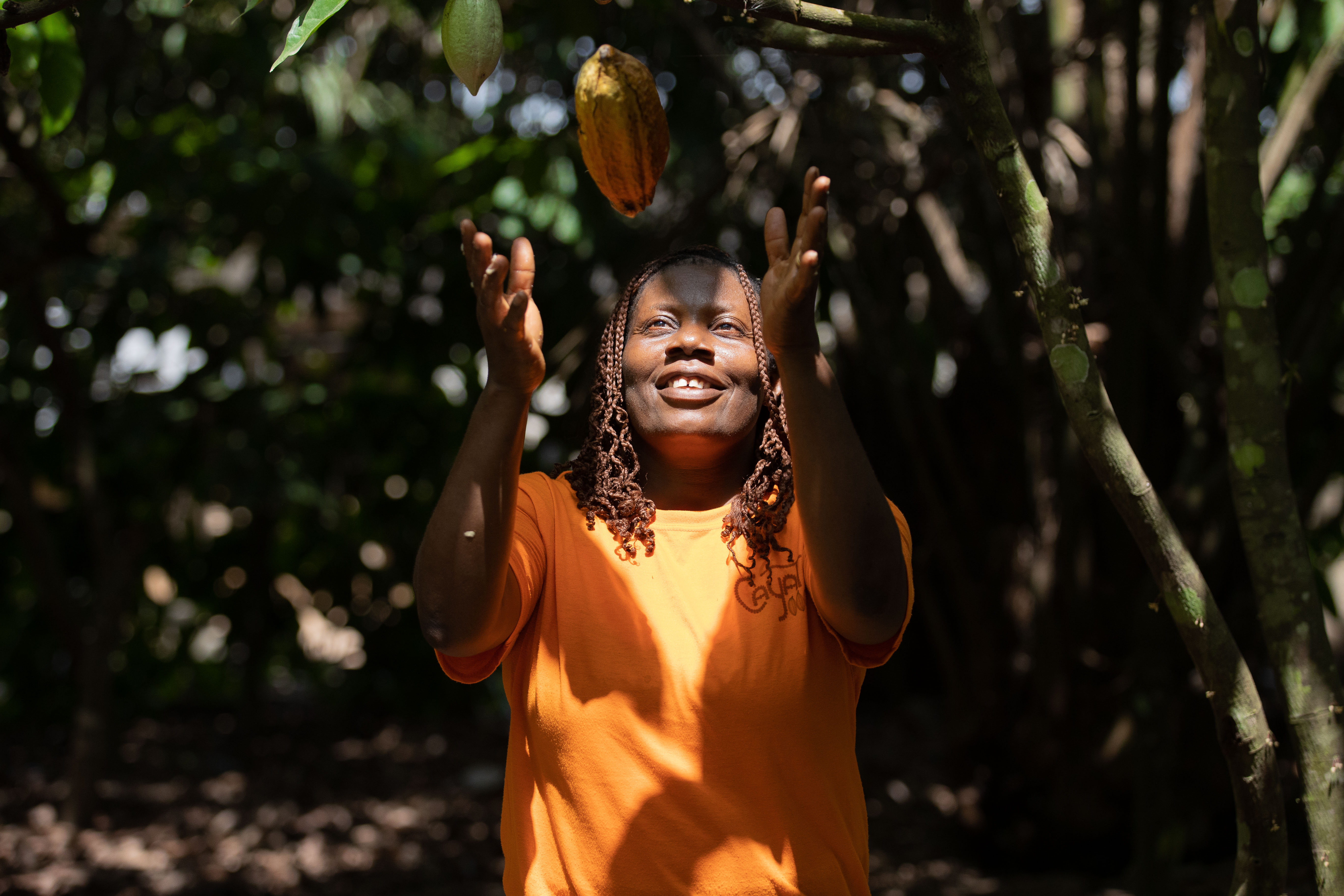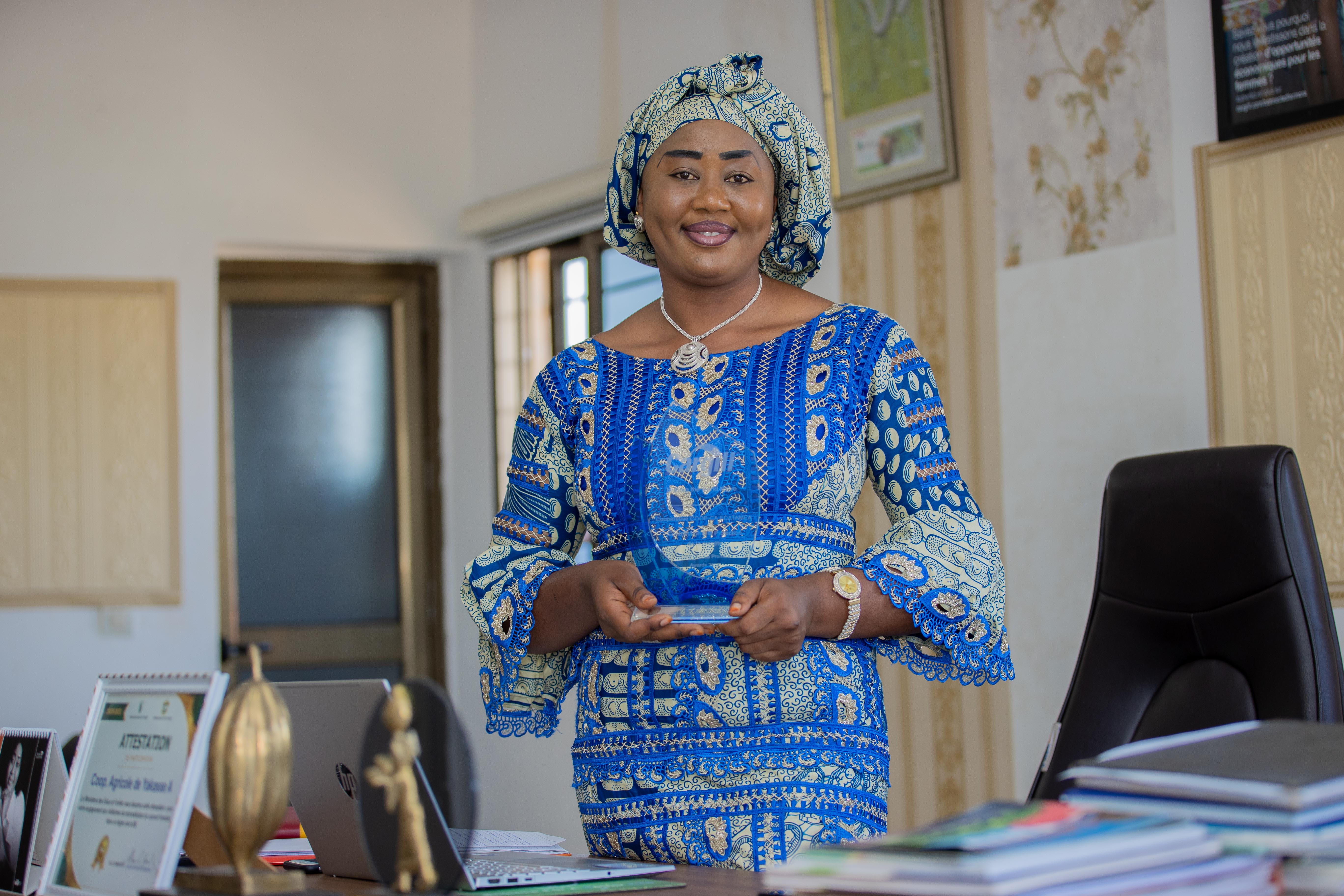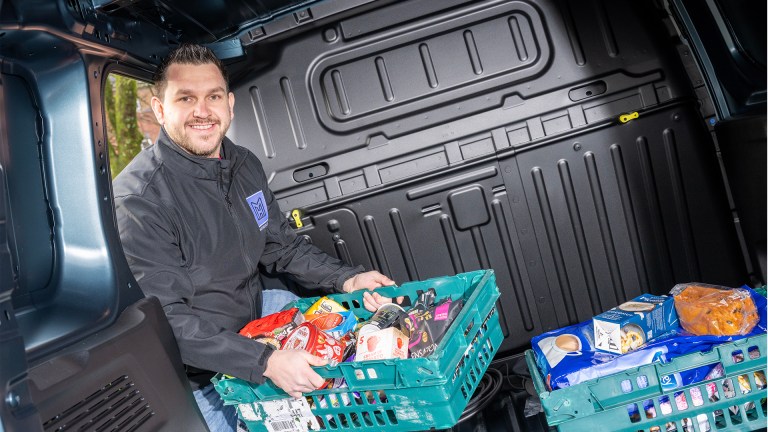Globally, it is estimated that there are around six million cocoa farmers and between 40 and 50 million people who depend on cocoa for their livelihood. Seventy per cent of total cocoa production comes from Africa (predominantly Ghana and Ivory Coast in West Africa).
On the surface, the cocoa sector appears to be male dominated as the majority of farms are owned by men (the Fairtrade Foundation reported in 2020 that only 25% of women cocoa farmers in Ivory Coast own their land), and it is the landowners who bring the beans to the collection sites and receive the payment. However, according to a report by Fairtrade Foundation titled ‘The Invisible Women Behind our Chocolate’, women account for two thirds of the labour force.
Many co-operatives have now established women focused initiatives to improve access to training, inputs including seedlings and financial services in order to strengthen women’s involvement in the cocoa sector and reduce gender inequalities.
Ivorian cocoa co-operative, CAYAT is one example. The women-led association was established in 2010 with 283 members, and has grown to over 3,000 members across 38 villages in Ivory Coast, 400 of whom are women.
CAYAT’s aim was to unite cocoa farmers and tackle the deep socio-economic challenges in the region, whilst farming sustainably and boosting farmer incomes. Before the co-operative was founded, farmers sold their cocoa at low prices to middlemen and were often unable to meet their most basic needs. CAYAT created a Women’s Society in 2015 to support female farmers to play a greater role in business and community development.
Today, CAYAT refers to this as the Women’s Union and it has 500 participants, including wives of male farmers, carrying out various income-generating activities, such as growing cassava and maize. Their dream is to have a production unit to mechanise this process, which is currently carried out manually.











